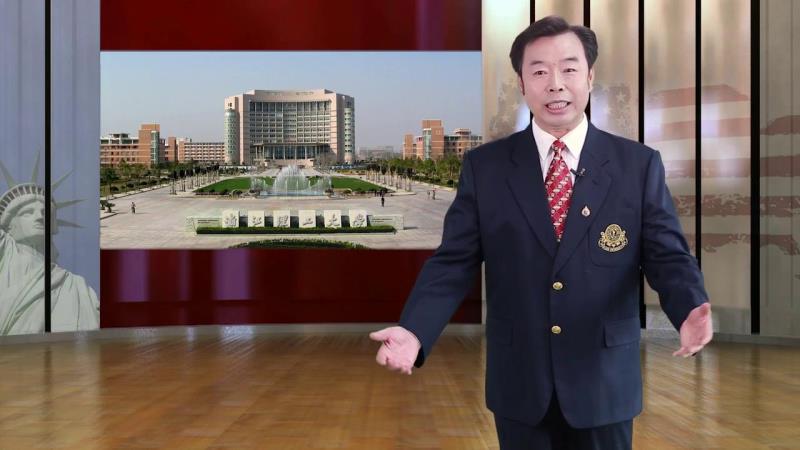
当前课程知识点:Culture and Tourism > Week 4: Cultural Landscapes: Meanings, Values, Assessment, Documentation > 4.2 Landscape Values > 4.2.2 Cultural significance for heritage source
返回《Culture and Tourism》慕课在线视频课程列表
返回《Culture and Tourism》慕课在线视频列表
现在继续学习概念框架
我现在想看看价值观
实际上 我一直在谈论价值观
现在让我们来看看我所说的价值观
这里我想引用一份商业文件
即1994年以来关于真实性的奈良文件
当我们看到遗产地不再是纪念碑和遗址
而是具有无形的一面时 情况开始发生变化
各种形式和历史时期的文化遗产保护
都植根于遗产所具有的价值
与价值相关的是遗产地的含义 包括景观
重要的是要注意到
随着文化传统和价值观的改变
它将随着时间的推移而改变
因此 理解意义和价值观是文化遗产进程的基础
当然也是一种基于价值观的国际研究和实践方法
国际上有遗产价值的类型
这里 有列明价值观的类型
因此 这些类型将我们所称的意义分解为
遗产价值的组成类型
我一会儿再谈意义这个词
它们结合了专家 公民 社区 政府
和其他应该考虑的利益相关者的观点
所有这些都可以有效地表达和比较
对这一进程至关重要的是
对所有文化的尊重要求遗产财产必须在其
所属的文化背景下加以考虑和判断
换言之 我们应该根据亚洲
特别是中国的文化背景来判断这里的景观
以下是价值观的例子
即基于价值观的遗产保护方法
例如 处理非物质遗产问题是澳大利亚ICOMOS Burra Charter的核心
该章程第一版诞生于1977年 经过了各种迭代
最新的是2019年版本
里面包含运用了美学价值 历史价值 科学价值 社会价值和精神价值
直到2013年 精神价值才显现出来
这很奇怪 然后它也被正确地添加进去
在中国也有一份文件
即中国ICOMOS确定文化意义的原则
包含艺术性 历史性和科学性
我碰巧认为艺术实际上比审美好
审美是一个非常西方化的词 常常很难理解
很多人认为审美意味着美丽 这是最好的
其实不是这个意思
中国ICOMOS原则实际上是
根据 Burra Charter 为基础制定的
具有英国传统的价值观
您会发现它很有趣
它增加了经济 娱乐 教育和学术领域
然后 我将 世界遗产公约
及其 操作指南 放在底部
它有所谓的标准来确定突出的普遍价值
重要的 我们称之为 文化遗产
我一直提到文化意义
文化意义是一个地方所具有的价值品质的总和
包括五种价值
这是有人说的Burra Charter 来自五个价值观
您可以同等地应用到
美学 历史 科学 社会和精神等五个价值观上
因为这在 Burra Charter 第1.2条中列出
通过调查这个地方和评估每个价值观的过程
我们可以清楚地描述为什么一个地方是重要的
这是确保我们的决定和行动不会削弱其重要性的第一步
在实践中 通常会对价值进行评估和分析
以便为正在研究的遗产资源及其管理准备重要性声明
意义在根本上很重要 它对人们的意义和重要性
对于世界遗产而言
其重要意义体现在突出的普遍价值(OUV)声明中
因此 至关重要的是
旨在揭示景观或任何财产的价值和意义的研究过程
以及在实践中使用的文件过程都遵循这一框架
其他研究人员 客户 社区和其他利益相关者
可以清楚地理解这一框架
它包括可复制的方法 这些方法可以重复
您可以将其应用到其他地方
以便在其他地方对其应用程序进行测试 修改
在这里 档案和现场研究将是至关重要的组成部分
我会讲到这一部分
当我们在指导严格的实践的情况下查看环境时
查看档案是很重要的
但是进入现场查看是也很重要
您阅读了有关景观
或您正在处理的任何内容的信息
然后出去尝试应用你在档案中读到的东西
记录你所看到的
然后 您可以一起开始制作
实际上是如何了解此景观的
第三部分是一种可复制的研究方法
它还允许对提议的决定或建议进行评估
有人必须对其进行评估
因此他们需要明确的指导方针
以评估内容
因为如果您不这样做
那么您就进行了研究
并提出了一些不清楚的建议
也许有人会说
这不是我们想要您做的
如果您遵循了此过程
你可以说 我遵循了流程
让我们看看如何应用这种东西
下一节为景观识别 文献 评价 分析和评估
-1.1 Introduction course outline and UNESCO World Heritage Program
--1.1.1 Introduction of culture and tourism course outline
--1.1.2 Introduction of UNESCO World Heritage Program(1)
--1.1.3 Introduction of UNESCO World Heritage Program(2)
-1.2 Cultural Heritage-1
--1.2.1 The meaning of culture heritage
--1.2.2 Criterion(i): masterpiece of human creative genius
--1.2.3 Criterion(ii): exhibit important interchange of human value
--1.2.4 Criterion(iii): bear a unique or at least exceptional testimony
--How can the public understand the importance of heritage?
-1.3 Cultural Heritage-2
--1.3.1 Criterion(iv): an outstanding example in human history
--1.3.2 Criterion(v): represent a culture or human interaction with environment
--1.3.3 Criterion(vi): associated with living traditions of outstanding universal significance
-1.4 Natural Heritage
--1.4.1 Natural heritage features, formations and criterions
--1.4.2 Cases studies of natural heritage
--Cultural landscape meanings: The case of West Lake, Hangzhou, China
--How to access heritage of your hometown?
-2.1 Mixed Culture and Natural Heritage
--2.1.1 Mixed heritage operational guidelines and cases (1)
--2.1.2 Mixed heritage operational guidelines and cases (2)
--2.1.3 Mixed heritage operational guidelines and cases(3)
-2.2 Authenticity, Integrity and Cultural Routes
--2.2.1 How to determine authenticity and integrity
--2.2.2 Heritage routes and heritage canals (1)
--2.2.3 Heritage routes and heritage canals (2)
--What do you think about cultural heritage categories?
-2.3 Special Heritage and Sustainable
--2.3.1 Physical remains of the history of technology and industry
--2.3.2 Transboundary Heritage, Serial Heritage, Serial/Transnational Heritage
--2.3.3 Intangible cultural heritage
--2.3.4 UNESCO World Heritage and Sustainable Tourism Programme
--Recovering the Memory of Ourselves for the Sustainable Cites
--Week 2 quiz
--What do you think about cultural heritage categories?
-3.1 The Australia’s Heritage System and Sydney Opera House
--3.1.1 The Australian Heritage System
--3.1.2 Case Study: The Sydney Opera House
-3.2 Role of the ISCCL and Cultural Landscape (1)
--3.2.2 Uluru-Kata Tjuta National Park
--3.2.3 Honghe Hani Rice Terraces
-3.3 Role of the ISCCL and Cultural Landscape (2)
--3.3.1 West Lake cultural landscape (1)
--3.3.2 West Lake cultural landscape (2)
-3.4 Rural Landscapes as Heritage
--3.4.1 ISCCL Principles Concerning Rural Landscapes as Heritage
-3.5 Case Study: Mongolian Altai
--3.5.1 Nature Culture Integration & the Mongolian Altai(1)
--3.5.2 Nature Culture Integration & the Mongolian Altai(2)
--Week 3 quiz
--Discussion: What do you think is the role of ISCCL?
-4.1 Introduction of the Meaning of 'landscape’
--4.1.1 Brief introduction of landscape and culture
--4.1.2 The conceptual framework of cultural landscape
-4.2 Landscape Values
--4.2.1 The word “landscape” itself and differences in Western, Eastern
--4.2.2 Cultural significance for heritage source
--Discussion: What do you think the cultural landscape attracts you?
-4.3 Reading the Landscape: Identification and Assessment
--4.3.1 Planning model for heritage conservation management policy
--4.3.2 Cultural landscape resources evaluation steps
--Article: Cultural mapping: Intangible values and engaging with communities with some reference to As
-4.4 Case Study: Wingecarribee Historic Landscape
--4.4.1 Case study:Wingecarribee historic landscape study(1)
--4.4.2 Case study:Wingecarribee historic landscape study(2)
--Week 4 quiz
--Discussion: What should we do to strengthen the protection of cultural landscape?
-5.1 Indigenous Tourism
--5.1.1 Indigenous tourism background
--5.1.2 World heritage and indigenous peoples
--5.1.3 Tourism issues at Canadian indigenous world heritage sites
--Discussion: What challenges indigenous World Heritage faces?
--Article: State conceptions of indigenous tourism in Chile
-5.2 Case Study and Conclusion: Great Expectations for Tourism
--5.2.1 Case study Pimachiowin Aki
--5.2.2 Conclusions:Great Expectations for Tourism
--Disussion: Do you have any experience of indigenous tourism?
--Week 5 quiz
-6.1 The Definition of Heritage in Heritage Performance Study
--6.1.1 The definition of heritage in heritage performance study
--6.1.2 Heritage performance and meaning making
--6.1.3 Two key issues emerging from qualitative study
-6.2 Heritage Performance - Evidence from Australia, England and USA
--6.2.1 Heritage performance - reinforcement
--6.2.2 Heritage Performance - inter-generational communication and social values
--6.2.3 Heritage performance - recognition and respect
--6.2.4 Heritage performance - education
--Article:Theorizing museum and heritage visiting
-6.3 The Conclusion of Heritage Performance
--6.3 The conclusion of heritage performance
--Week 6 quiz
--Discussion: What kinds of heritage performances have you learned in this week?


